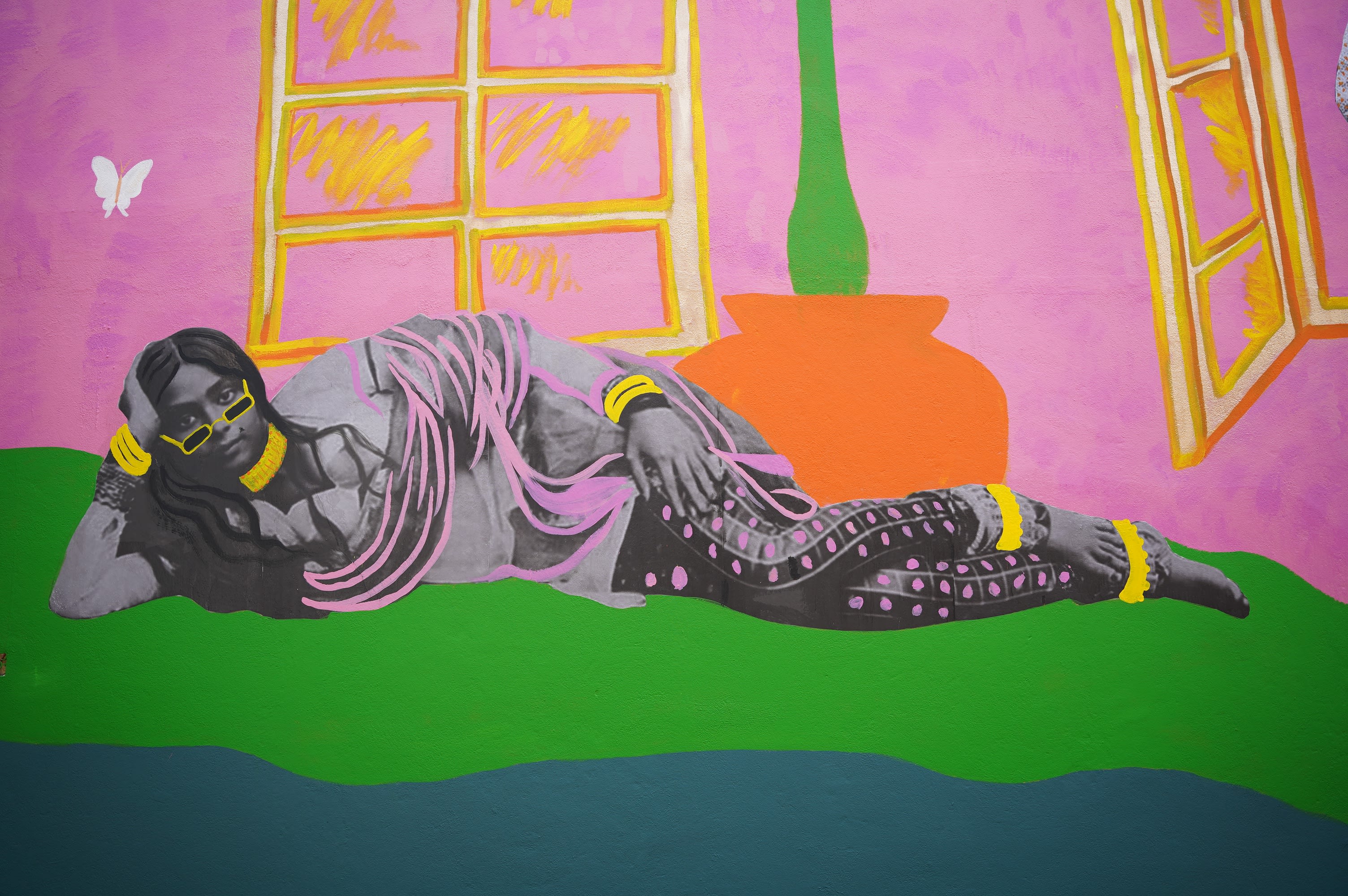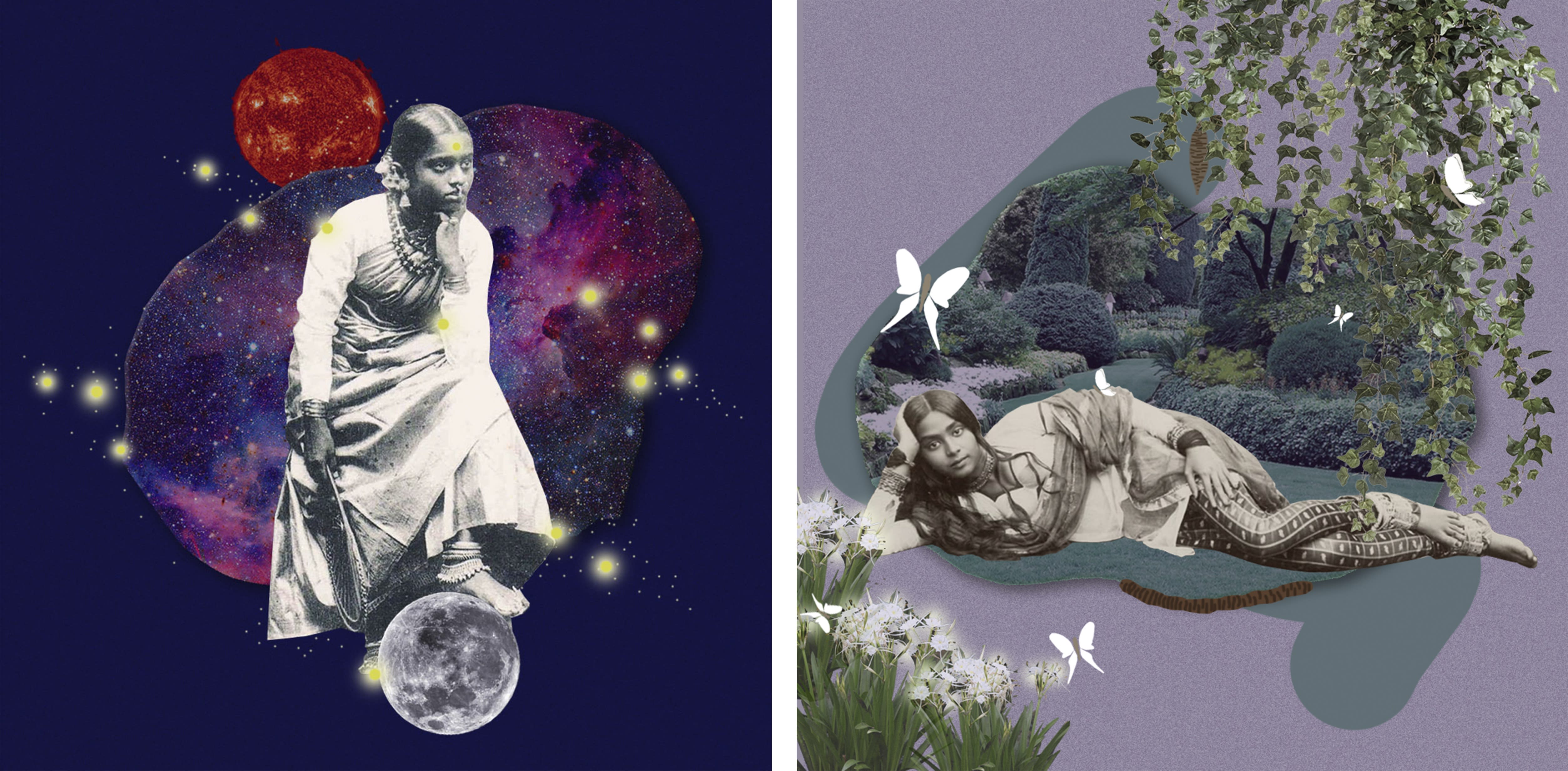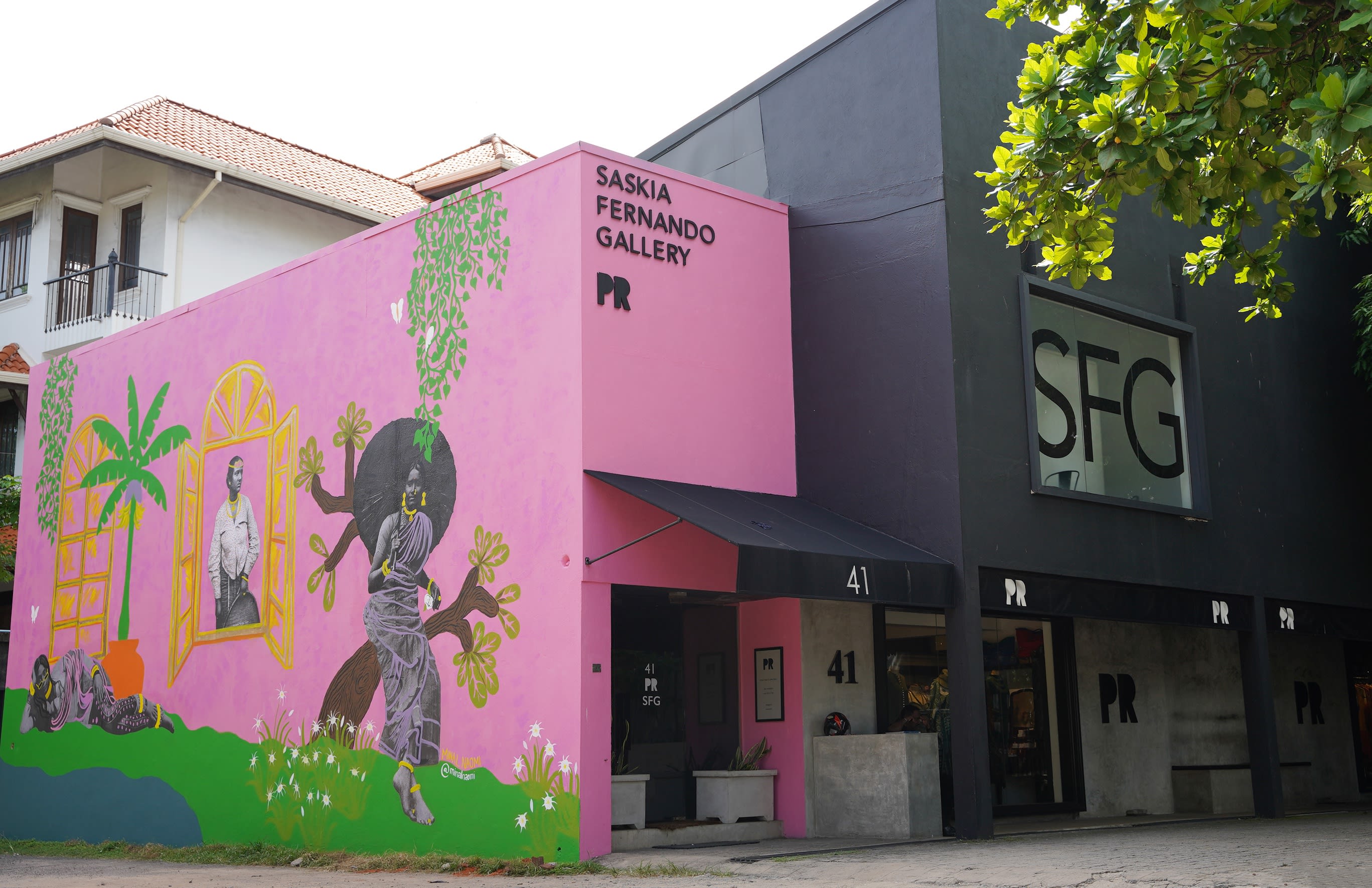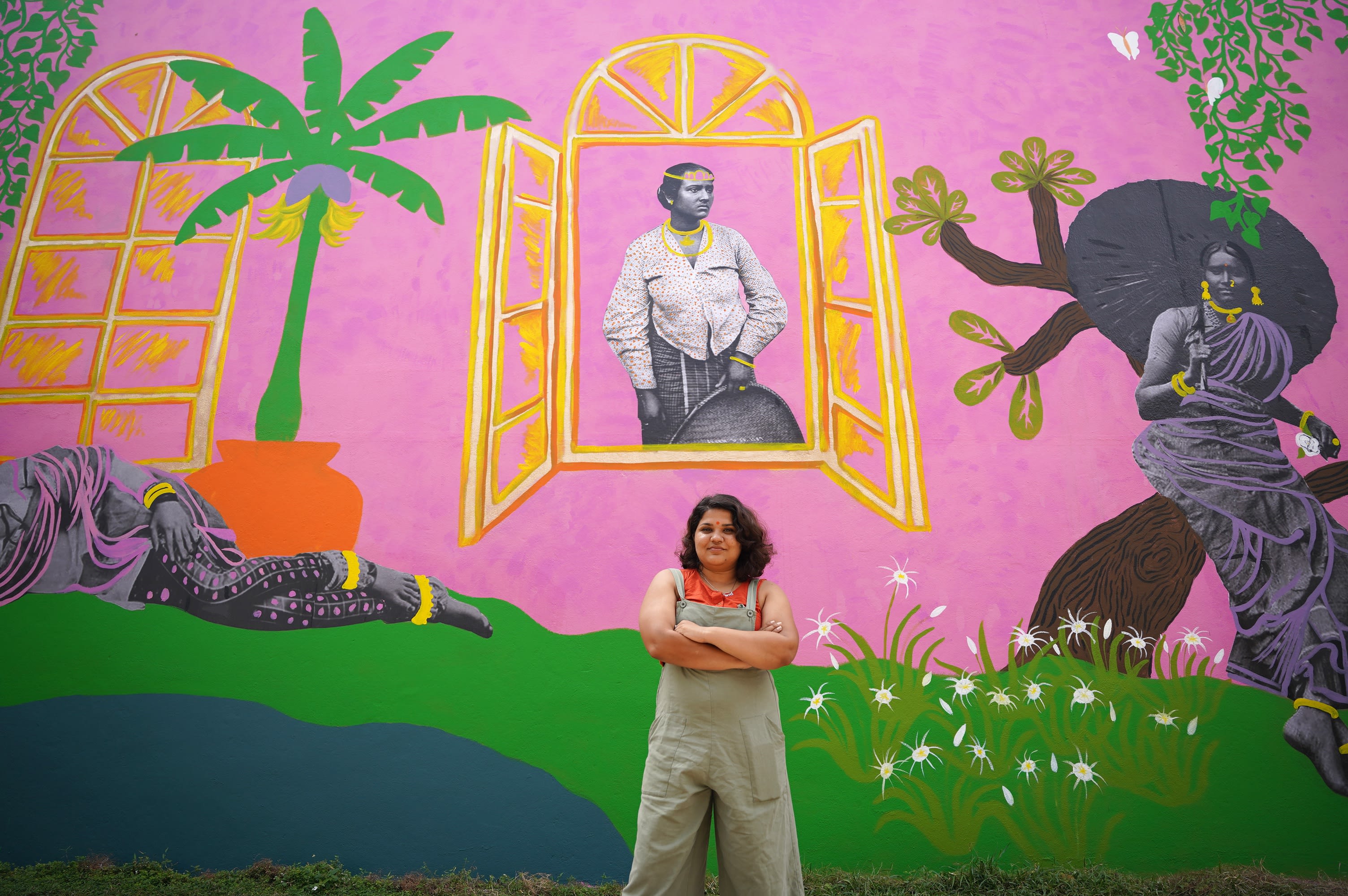 |
|
Introducing feminist, activist and artist Minal Naomi, the winner of the SFG Mural Project! In her interview with us, she discusses her creative practice, the importance of public art and the concept behind the paste-up mural she created at 41 Horton Place.
Join Minal on our IG LIVE, Tuesday 11.07.23 at 17.30 (SLST) as she discusses the thinking behind her mural.
|
WHAT INSPIRES YOU?I am inspired by stories of resilience, particularly stories of strong women. Having being born and bred on this island, I believe women need to be extra resilient in order to live their truest selves, which is the case in many countries within the South Asian region. I have grown up around some very strong women, who’ve embraced creativity as a form of expression whether that is cooking, theatre or writing. This definitely inspires me.
I am heavily inspired by music – I will often be blaring music when creating – whether it is the hauntingly beautiful tunes of Erik Satie or the effervescent sitar music of Anoushka Shankar and my ultimate favorites Nina Simone and Erykah Badu. Naturally being an islander, I am inspired by nature; from rugged terrains, cool hilly-breezes and of course floating in the ocean – which is most definitely my happy place!
|
|
|
WHO INFLUENCES YOUR CREATIVE PRACTICE?I also grew up engrossed in the arts – at one point I was enrolled in five dance classes a week and was convinced I was going to pursue this as a professional career. I am really keen on understanding how the human body interacts with the spaces it inhabits which is one of the reasons I studied Interior Design for my Bachelor’s degree.
Having grown up in a family of journalists, I believe a lot of my influence is derived from having pivotal conversations at the dinner table as a young child. Issues of human rights and justice were every day conversations – during the peak of the war, which was unusual to say the very least. After the loss of my uncle who was a journalist, I turned to art as a form of catharsis. At the beginning this work was only for my eyes, until I realized I should begin sharing my story as there are so many people on this island who have had similar experiences to my family.
If I were to really point out artists that have influenced my practice, it would be Tracey Emin, Guerrilla Girls, Marina Abramovic and Georgia O’Keeffe. However I think I draw inspiration from so many avenues so it is really hard to tie my creative influence down to one artist. I have to also mention artist Shilo Shiv Sulaiman who is an absolute rock star and a force to be reckoned with, artist Anoma Wijewardene who helped immensely on my debut collection, Hema Shironi whose intricate work is super inspiring and landscape artist Sam Soundy who continues to inspire me on the daily! |
|
|
What are the themes that you explore in your work? Tell us about your process and how you express your ideas.
Issues of Identity are central to the work I produce. I grew up in a multi-ethnic family which made life a bit hard on this island. My father is Sinhalese and my mother is half Burgher and her father’s side of the family is originally from Atchuvely, a little outside Jaffna town. I constantly face ‘othering’ and am questioned about where I am from regularly. This is probably because I look and speak differently to most around me and I do not fit into a neat box. This has really influenced some of my work. As I believe we are all more alike than different and we all belong to this island, no matter what ethnicity or religion we belong to. I also explore ideas of feminism. I am often the resident feminist in my circle of friends and in life in general. I am quick to speak out about internalized patriarchy that I face on a daily basis!
Other themes I have begun to explore are themes of justice and human rights – in particularly using my privilege and voice to speak about the many slain journalists in the North and East who do not get the same coverage as those in the South. As for my process - it is sporadic. I wish I could say I paint routinely, however I am allergic to routine and only create when I feel the urge to express. That said, I will mull over a theme or a topic for months on end, making notes, and doing reading and research before actually bringing paint to canvas. |
|
|
|
Introspection & Wholeness, from the Anachronism series, Digital Collage
|
|
|
|
|
How has your collaboration with the Fearless Collective shaped your practice?The Fearless Collective has been integral to my practice. I have found such a strong bond with these artists and I am loving the process of building cross-border solidarity with all these amazing women from around the world. One thing that was apparent is that we share so much in common and face similar struggles whether it is Nepal, India or Uzbekistan. The Fearless Collective also taught me about co-creating with a community. This is something that is new to me as my work was mostly a single-person, lone process. After working with them, I am now enjoying working with communities and painting their stories alongside them. I also cannot understate how deathly afraid I am of heights and the Collective has made me face this fear head on. I am now slowly getting over this crippling fear ! The trick for me is to never look down! |
|
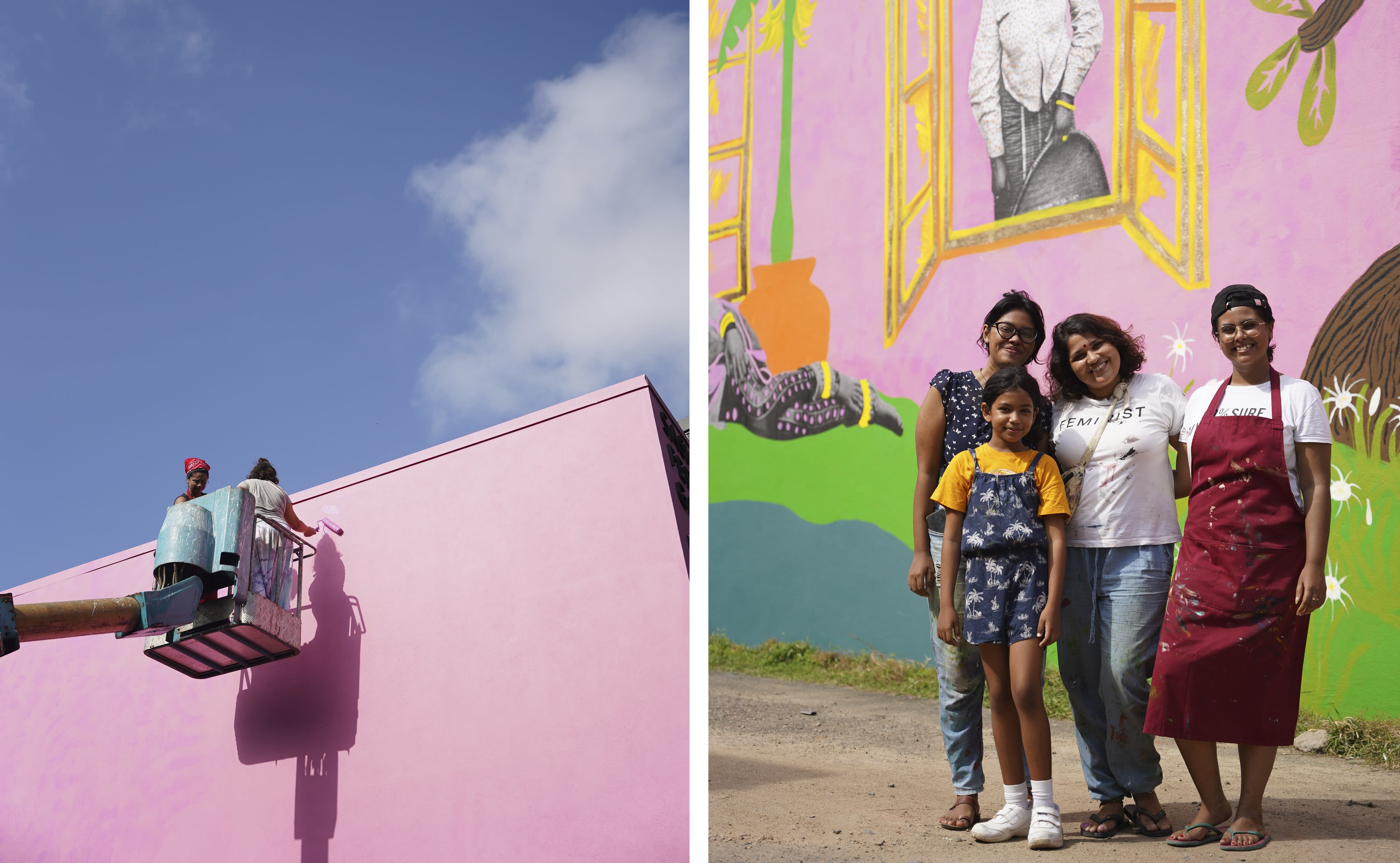 |
|
| Minal and her mural crew Adrianne, Tara and Siobhan. | |
|
|
|
WHAT ARE YOUR THOUGHTS ON MURALS AND PUBLIC ART IN COLOMBO?In 2019, there was a surge in murals around the island. However these murals all had one theme in common – ‘Nationalism’. This meant many murals with army clad men, politicians who were also men, images of Buddhism and finally images of Lions sprung up around the island. All of this imagery was a form of propaganda, which highlights how important murals are. Public art has the opportunity to cut through various social strata. Anyone walking on the streets can have access to this art. I believe we need to move away from these symbols of power and move towards beauty, acceptance, empathy and love. We need to see more images of women on the streets, not only in Colombo but around the entire country. Art should be able to inspire anyone – and we need to use our platforms responsibly in order to move towards a more inclusive society. |
|
TELL US ABOUT YOUR MURAL AT 41 HORTON PLACE. |
|
|
This is a paste-up mural inspired by my Anachronism series. I chose paste-up as a method as I wanted to bring the collage-style element to this work. I began looking into images of colonial women after taking a lecture on Louis Agassiz’s daguerreotype’s of the African people and his problematic framing of the images. I saw a lot of similarities with the colonial photography of Ceylonese people. The women in my mural are all colonial women. Two from colonial Ceylon and one from India. The idea was to show a multi-cultural cross section of women. We have Tamil, Sinhalese and Muslim women all sitting side by side. I wanted to reflect on the colonial gaze – for whom were these images originally taken for? All these images were taken by colonial photographers. Most of these images ended up on postcards as symbols of the ‘exotic east’. But we know nothing of the women in the pictures – the selective erasure of these women’s stories was something that got me thinking. Using these images, I pictured all the women in a form of rest – the farmer is placed within a home wearing a crown, one lady wears shades and nonchalantly lounges on the lawn whilst the other sits with her brolly on a tree. The women all represent multiple ethnicities which was important to me. I used this to counter the usual rhetoric that this island belongs to one group of majoritarian people. I also wanted to make sure it was vibrant and fun and I’m over the moon that it sits in the heart of Colombo! |
|
|
|
|
|
|
|
| All images courtesy of Minal Naomi & Kavindu Sivaraj |
